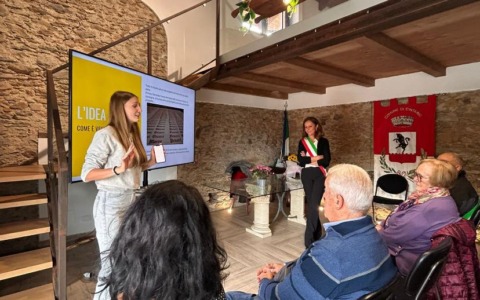Okay, let’s break down this text and extract the core story, themes, and significance.
Here’s a summary and analysis, divided into sections:1.
The Story of a Survivor (The Central Narrative)The text primarily tells the story of a man from Cintano (a small town), whose name isn’t explicitly given, but is a survivor of forced labor during World War II.
Here’s the sequence of events:* Forced Labor: He was sent to work in underground factories, constructed in appalling conditions, as part of forced labor.
* Escaping Execution: He narrowly escaped execution by German forces as the Allies approached.
* Liberation and Return: He was liberated on April 27, 1945, and returned home on August 17, 1945, physically and nutritionally depleted.
* Post-War Dedication: After the war, he became a dedicated secretary of the national association of former internees, organized gatherings for remembrance, and participated in commemorative events, reading a farewell prayer.
* Civic Involvement: He held various public offices (councillor, assessor, deputy mayor) until 2009.2.
The “Albo d’Oro” (Golden Roll of Honor) and its SignificanceThe second part of the text introduces the “Albo d’Oro,” a roll of honor documenting the war dead from Cintano.
This is presented as a result of a meticulous research effort by the local administration.* Reconstruction of History: The research delved into local and national archives (town records, Ministry of Defense database) to identify and document the lives of the fallen.* Names and Brief Biographies: The roll includes names and brief biographical details of ten soldiers who died in the two World Wars: Pietro Cresto, Domenio Giovando, Giovanni Tamietti, Giovanni Giovando, Domenico Zucco, Angelo Donato, Pietro Gaetano Tamietto, Giacomo Giacoletto, Oreste Ronchetto Salvana, Giovanni Bigando and Giacomo Bertoglio Puin.* A Small Town’s Impact: The presentation emphasizes how a small town like Cintano was deeply affected by the “History with a capital H.
“3.
Themes and Analysis* Resilience and Remembrance: The story is fundamentally about resilience in the face of unimaginable hardship and the importance of remembering those who suffered.
The survivor’s post-war dedication to remembrance highlights this theme.
* The Human Cost of War: The text vividly depicts the brutal reality of forced labor and the personal toll of conflict.
It goes beyond statistics, focusing on individual lives and stories.
* Community and Identity: The reconstruction of the “Albo d’Oro” is an act of community building and a reaffirmation of local identity.
It’s a collective effort to acknowledge and honor the town’s history.
* Confronting a Difficult Past: The mention of the council revoking Benito Mussolini’s citizenship five years prior to the presentation of the “Albo d’Oro” suggests a town grappling with a complex past and actively confronting its legacy.
* The Power of Small Actions: Even a small town can play a significant role in preserving memory and confronting history.
The survivor’s decades of remembrance and the “Albo d’Oro” project are testament to that.
4.
Significance and Tone* Emotional Weight: The text carries significant emotional weight, evoking both the suffering of the war years and the dedication of those who worked to preserve memory.
* Respectful and Dignified: The tone is respectful and dignified, emphasizing the importance of honoring the fallen and acknowledging their sacrifices.
* Historical Context: The story is deeply rooted in the historical context of World War II and the forced labor practices employed by the Axis powers.
In essence, the text is a poignant tribute to the courage of individuals, the importance of remembering the past, and the power of community in the face of adversity.










